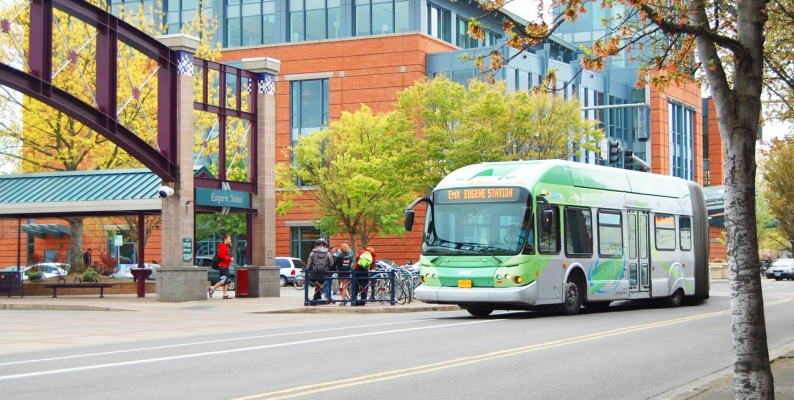Painted as the “next big thing” in transit, bus rapid transit systems have the luster of a new concept -- and the lack of research literature to match. A NITC research project set out to change that, producing a far-ranging research report delving into the influence of BRT on jobs, housing and development.
Bus Rapid Transit systems occupy a space between regular bus and light rail systems. Like regular bus systems, BRT systems typically use rubber tires and internal combustion engines and run on paved roads. However, the systems may share many features with light-rail trains, including exclusive lanes, off-vehicle payment systems and low floors and large doors for quicker boarding.
Led by Arthur C. Nelson at the University of Utah’s Metropolitan Research Center, the project, “National Study of BRT Development Outcomes,” looked at systems around the country, finding evidence that BRT systems influence development patterns in important ways. The research found that BRT systems are tied to positive outcomes for development and job location, although not necessarily changes in population or housing.
Bus rapid transit systems hold the promise of bringing communities some of the positive outcomes traditionally associated with light-rail transit systems but at a lower cost. The research will be of interest to...
Jan 08, 2016

